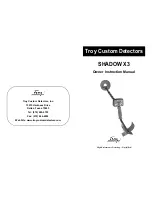
Where to Install a Gas Detector
Gas Type
Molecular Weight
NH3
17
CO
28
Air
29
NO2
30
H2S
34
Propane
44
Ethanol
46
N-Butane
58
Acetone
58
Isopropyl Alcohol
60
N-Pentane
72
Benzene
78
N-Hexane
86
Ethyl Acetate
88
Toluene
92
N-Heptane
100
N-Octane
114
Unleaded Petrol
114
Like all gas detectors, the best place to
install a
Gas Sense detector
will depend on
the target gas. In general, for gasses lighter
than air it will be installed 30-50cm from the
ceiling. For gasses lighter than air it will be
installed 30-50cm from the floor. For gasses of
a similar weight to air, the gas sense detector
should be installed close to head height
(approx. 1.2 to 2.0m)
The coverage of these detectors will depend on the
target gas, and the airflow conditions in the area to be
protected. The Typical coverage is 50m².
If the gas detector is being installed to monitor a
specific risk, then the detector should be located
approximately 1.5m away from that point (This is
because if the gas escapes under pressure, it may
be forced past the sensor, rather than into it, if the
detector is too close).
Lighter Gases
30cm to 50cm
Heavier Gases
30cm to 50cm
Gases of Similar
Weight to Air
1.2 to 2.0m
Environmental Factors
When choosing the best place to install the detector,
consider all other environmental factors in that area,
such as:-
Ventilation or Air Conditioning Vents
– Do not place a
detector where forced air flow will prevent gas entering
the detector.
Open Windows
– Airflow through an open window can
similarly prevent gas entering the detector.
Dust & Debris
– Avoid placing the detector where a
constant generation of debris could block the filter,
preventing gas from entering the sensor chamber.
Maintenance access
– critical detectors should be
checked regularly, and the sensor will need to be
replaced every 3-5 years. Do not fit to an inaccessible
location.
Ceiling beams
– if a lighter than air gas is to be
detected, large ceiling beams can effect coverage,
requiring a detector between each beam.
The Gas sense range of detectors are not suitable for
use in hazardous areas. They are intended for use in
light industrial, academic, commercial or domestic
installations.
4


































